Vietnamese cooking
I believe I implied, but didn’t say, that our cooking class in Bali was a revelation. Every meal from that point on made more sense and choosing from menus became less scattershot. Knowing classes like that existed gave me a renewed sense of purpose—something to seek out whenever we came to a new place.
As it happened, in the Philippines, we never stumbled upon a formal cooking class. Instead we were lucky enough to spend time with Jeoffrey’s extended family, cooking and eating dishes like binakol na manok. We spent nearly 2 weeks in Ho Chi Minh City doing nothing more than recovering, relaxing, and researching our next moves. However, on our last day there we took a Vietnamese cooking class at Hoa Túc.
It was shorter in duration (10am-2pm) and more expensive ($40/pp) than the class in Bali, but the biggest difference was that we all prepared and cooked our own dishes. There was no market tour, and much of the prep work was done for us, but there was something very satisfying in preparing our own meals.
The menu for the day consisted of:
- Chả giò hải sản (fried seafood spring rolls)
- Gỏi gà bắp chuối (banana blossom salad)
- Phở bò (beef noodle soup)
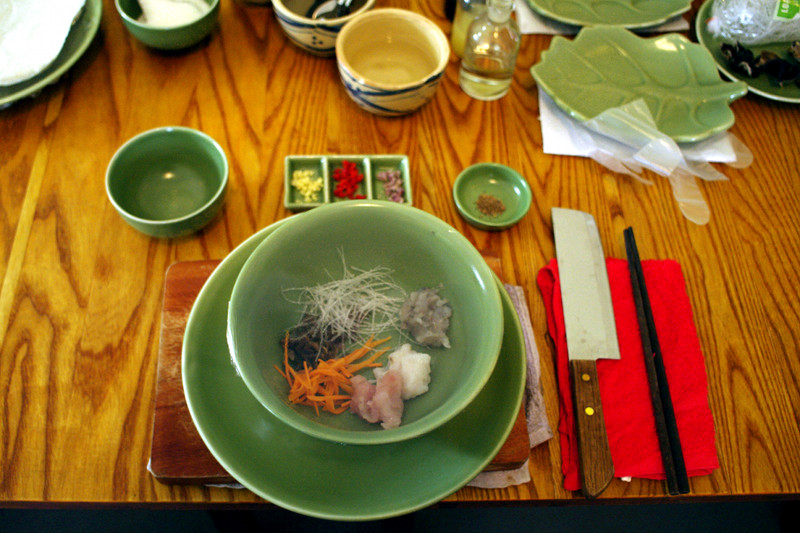
We started out by julienning some taro root to add to the already prepped fillings for our spring rolls: minced squid, fish, and shrimp, carrot, wood ear mushrooms, glass noodles, shallots, garlic, salt, and pepper. We mixed all the ingredients together with our hands, divided the filling in thirds, and rolled our three little spring rolls in circles of handmade rice paper. They had stations set up to fry our spring rolls, which cooked in about 5 minutes.

We also made our own fish sauce dip, a mixture of 1 tbsp each of water, sugar, lime juice, and fish sauce (nước mắm), 1 tsp of rice vinegar, and 1/2 tsp each of minced mild red chili and garlic.
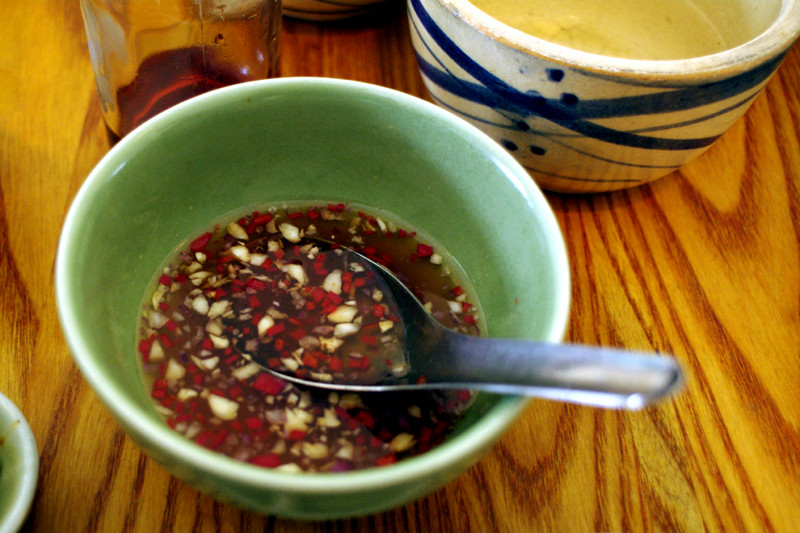
But the best part was learning how to serve and eat the spring rolls. Of course you can always just eat the spring roll plain, but it’s common for them to be served with a “salad”. You take a leaf of lettuce in your hand, add some fresh herbs (such as peppermint, perilla, and thai basil), wrap them around the spring roll, dip it in the fish sauce, and enjoy!
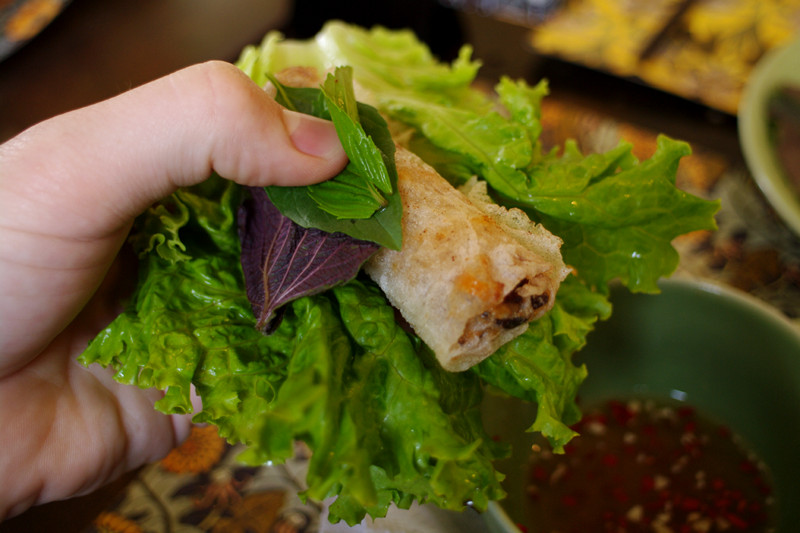
Afterwards we made a banana blossom salad, of which most of the work was prepping the banana heart. I don’t know if banana hearts show up in the US much, as I’ve never consciously registered seeing one before visiting the Philippines. It looks like a giant purple endive, except under each leaf are a row of banana flowers that would eventually grow into bananas. The flowers get thrown out—it’s the leaves that go into the salad. Which I guess means, every time you eat banana blossom salad, a bunch of bananas die—though we were told that the banana hearts are taken from a variety that doesn’t produce tasty fruit.
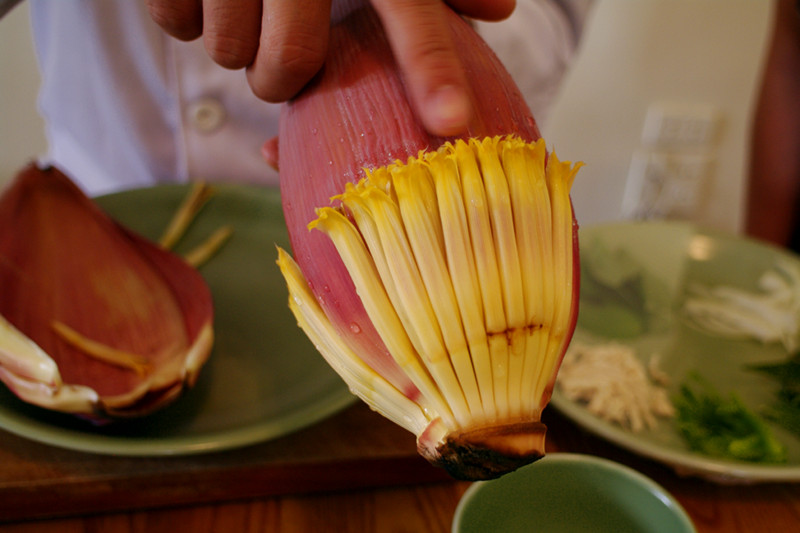
The purple outer leaves are discarded (or used as serving dishes). The soft, inner yellow leaves are julienned and then soaked for 20 minutes in an 80/20 water-vinegar solution to remove sap and prevent discoloration. Otherwise the salad is just a combination of the banana heart leaves, shredded poached chicken breast, julienned carrot, sliced onion, julienned green bell pepper, chopped Vietnamese coriander and peppermint, crushed peanuts, and the fish sauce mixture (with shallots) as dressing.
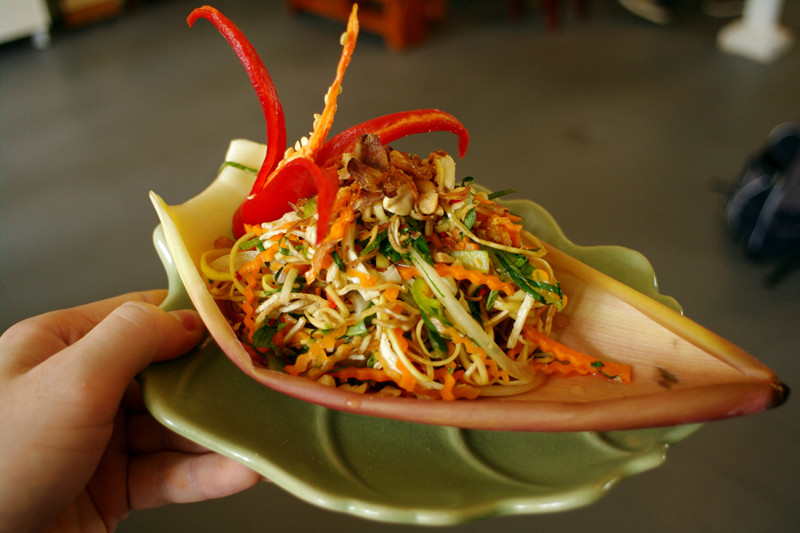
Finally we made phở bò (pronounced roughly: FUH-bah), the beef soup that most people in the US traditionally associate with Vietnamese cuisine. Again most of the tricky bits were done for us, such as the 4-8 hour process for making a beef stock. We did learn that the secret ingredients for the bouquet garni are roasted whole fresh ginger, star anise, cinnamon stick, cardamom pods, and shallots. Finishing the dish was then just a matter of putting the rice noodles, bean sprouts, sliced onions, lemongrass, sliced raw beef, and sliced cooked beef brisket into a bowl and pouring hot beef broth over it all. At the table it was up to us to add any accompaniments, such as peppermint leaf, long coriander, basil, red chilies, spring onions, chili sauce and hoisin sauce.
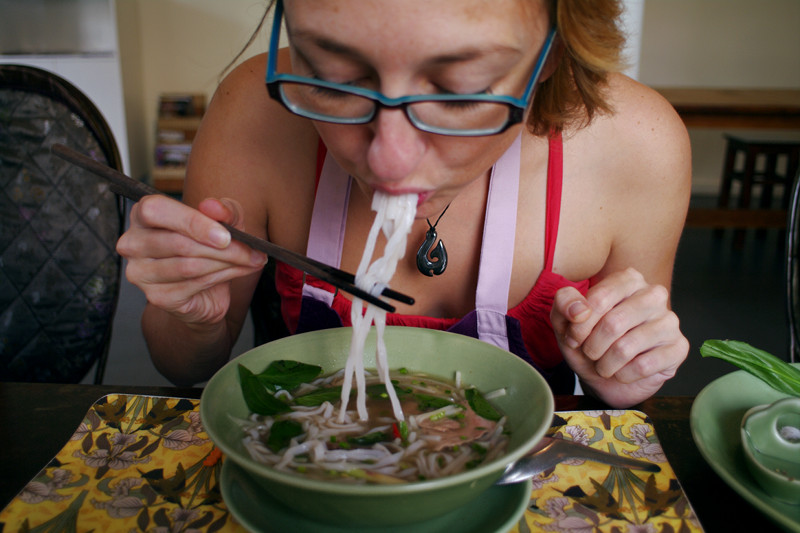
i love your food posts so much !!
…but hard to read this – because i am at the end of my fasting week ;-))
Don’t worry, it’ll be here after your fast! And I’ve got one more in the works, coming soon.